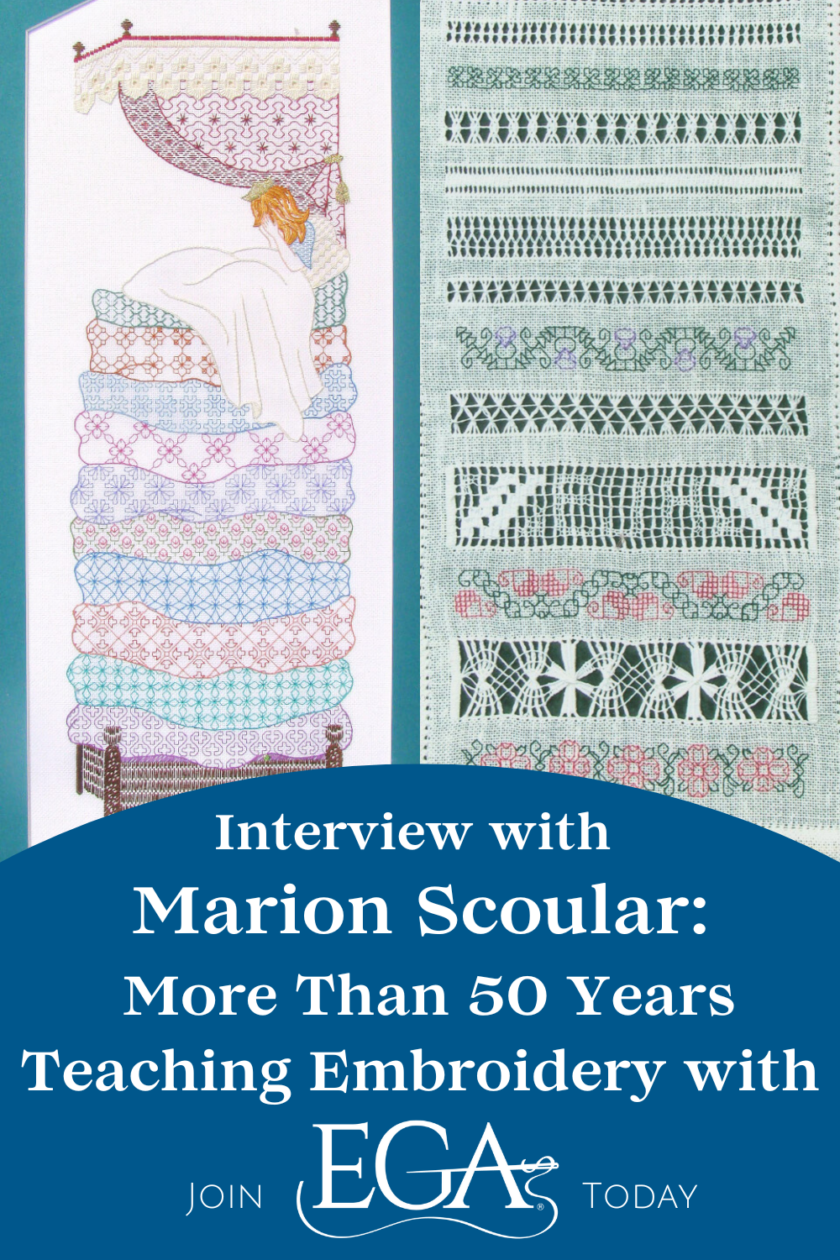Marion Scoular has taught for EGA for more than 50 years, and in that time she has shared a wealth of knowledge with our needlework community. Her Blackwork courses quickly and consistently fill up with excited students year after year, and her Hardanger course continues to attract new stitchers eager to tackle the intimidating technique (browse all of Marion’s currently available courses here). We talked with Marion about her design process and what embroiderers can expect from her classes on Blackwork and Hardanger, and learned some fascinating tidbits about the history of Aida and why needlework is actually good for your eyesight! Marion corresponded with us via “snail mail,” offering us a peek at her wonderful handwriting. We’ve shared snippets here for your enjoyment!
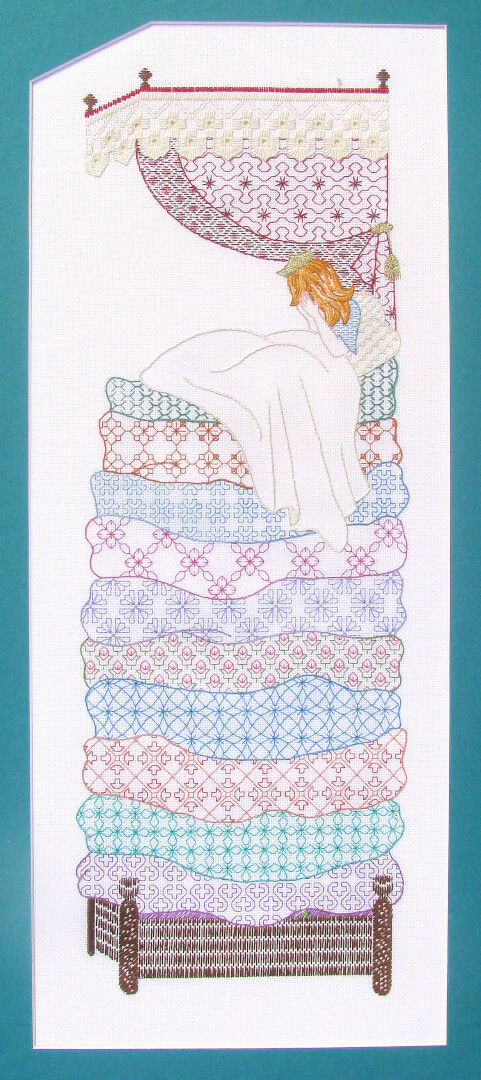
The description for your perennially popular “Princess and the Pea” embroidery project states: “Blackwork is the most creative, restricted embroidery that you can stitch.” This presents two seemingly opposing ideas: that of creativity and restriction. What does this mean to you?
Because it is a counted thread technique you are restricted by the number of threads per inch, normally stitched over two, NEVER one (except on Aida, which has a different weave and you stitch over one block.)

However, you may count over more than two threads on a fine count, as long as you are consistent. As far as creativity is concerned, it is endless, as you can gain inspiration from existing patterns (mosaics, quilt patterns) or your own imagination. I designed two alphabets, one straight, one on the diagonal, so that you can incorporate initials or names in a design.
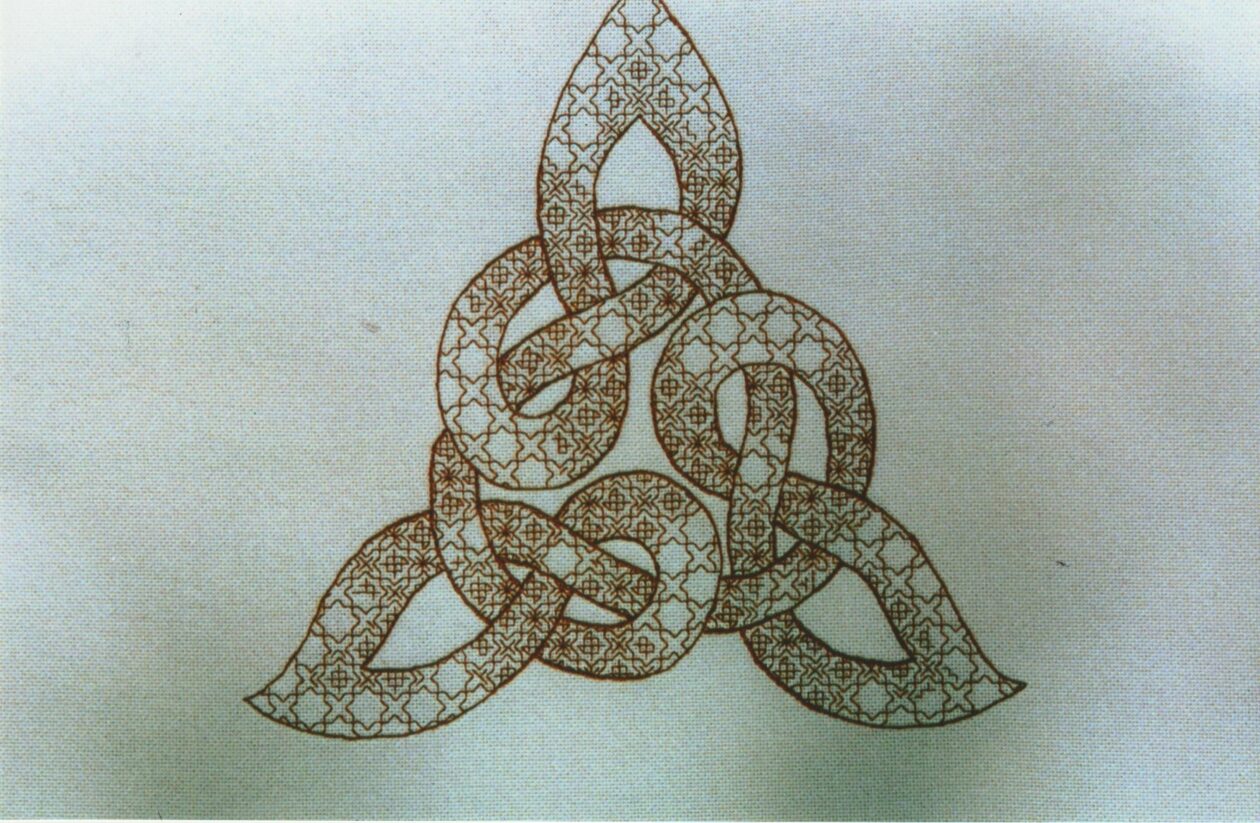
Unlike SOME teachers, who want strict adherence to their designs, I encourage stitchers to make changes (improvements?!) to my designs, to make it “original.” Like the student who added little feathers to the mattresses of the Princess and the Pea, saying that one of the mattresses had a “split.” LOVED IT! A cat lover added a cat to the end of the bed. Tony Minieri, a nationally renowned designer and teacher, took my Bremen Town Musicians MANY years ago, and came up with a subtle pattern of bones for the dog!
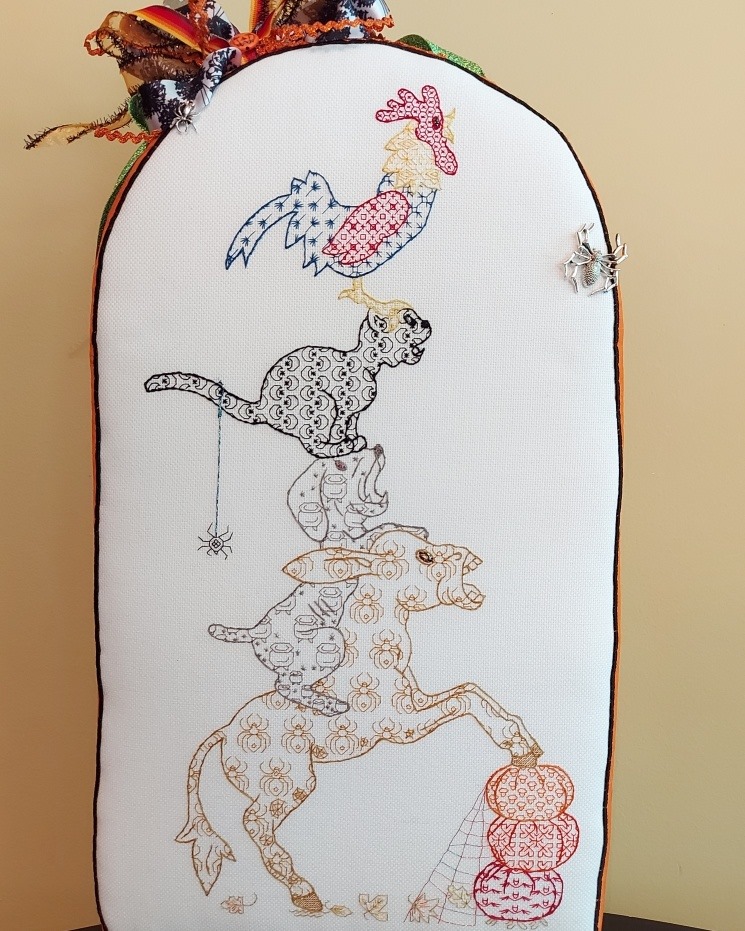
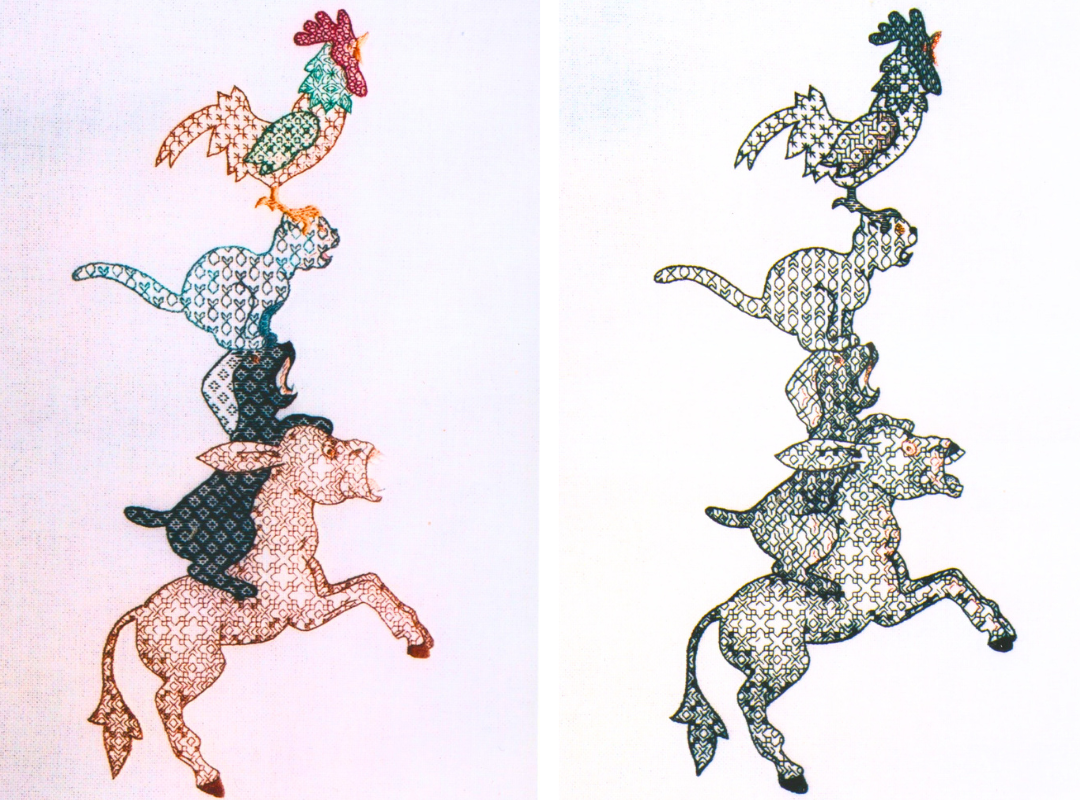
Hardanger can seem like an intimidating technique for beginner embroiderers. What should interested stitchers know about your Beginner’s Hardanger course that might ease their anxieties around learning Hardanger?
Hardanger, while it may look intimidating, has ONE great attribute. Because it is sewn and NOT worked on a frame or in a hoop, it is easy to take to a doctor’s appointment, or on an airplane, or to work on while sitting as a passenger in a car. Yes—accuracy is important, but not difficult. In my booklet “Hardanger” and my Correspondence Course, Beginner’s Hardanger, I describe each step in detail, including cutting, which scares so many. I do Hardanger for relaxation and Blackwork for a challenge.
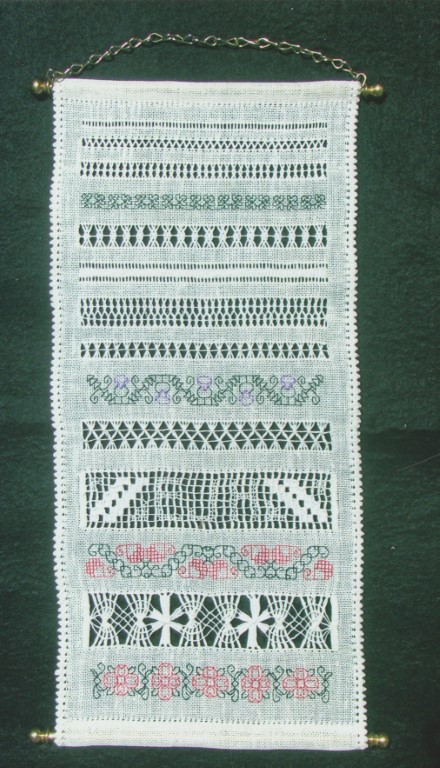
What inspires your designs?
As noted above, I have been inspired by Fairy Tales for many of my designs, as they appeal not only to children, but also to us “old ladies.”
I find inspiration in nature—flowers, leaves, even the map of the United States. Which I chose to do in 1972, to celebrate South Carolina’s Tricentennial, outlining the state in gold thread. One of my students came up with patterns inspired by the states—steers’ heads for Texas, road runners for Arizona, peaches for Georgia, etc. Rhode Island presented a problem! So small. But think of the fun she had! Another student outlined the Mason-Dixon line in gold threads.
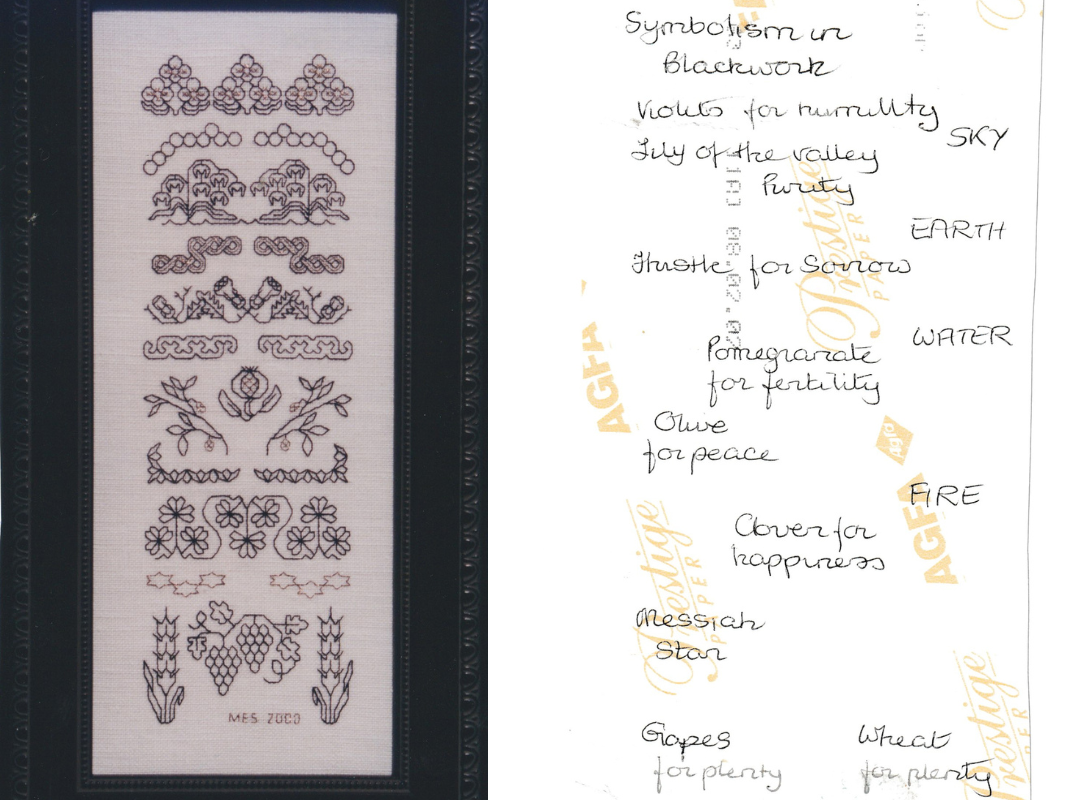
How do you approach your design process?
To design for a specific technique, one must be thoroughly conversant with it, knowing what might cause difficulties in stitching. For example, a large repeat pattern in Blackwork will not work in a small or narrow shape. Because the essence of Blackwork is comparison of “weights of pattern” (i.e. dark, medium, and light) choosing a pattern can take much time and thought.
Once I’ve completed a design, I draw it onto vellum and then Scotch tape it to my lightbox, using an 01 Micron Pigma Pen to draw it on the fabric. It is indelible, so it must be done with care. The design is then rolled up and can be used for years.
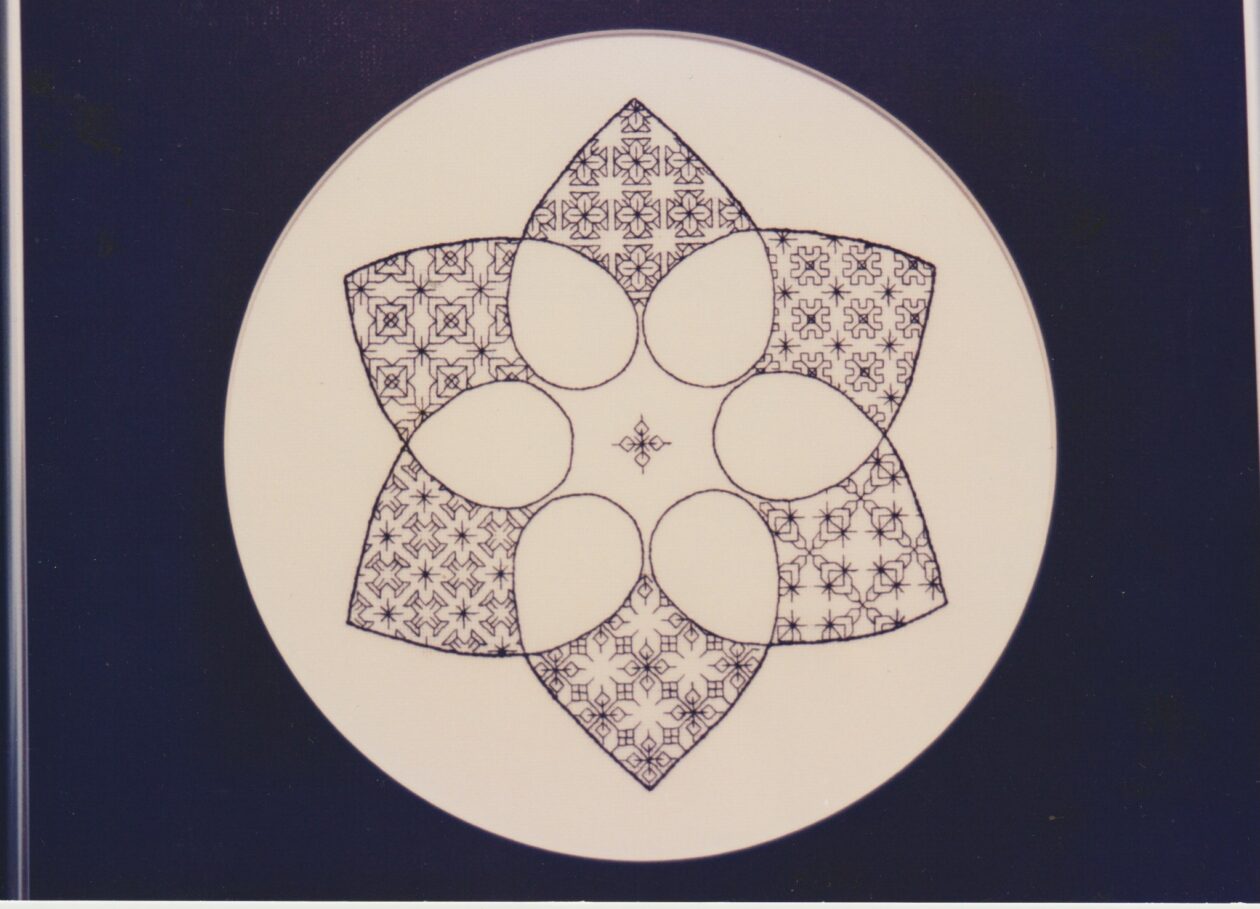
What are you currently working on?
Currently I am stitching a Hardanger ring-bearer’s pillow, designed years ago. It is 7” square and will be about 1.5” deep. Once I know whether the ring will be silver or gold, I’ll cover a foam square with a gold or silver fabric and make the slip cover of the Hardanger, which has a cross in the middle (not cut) and a heart in each corner to tie the ring into.
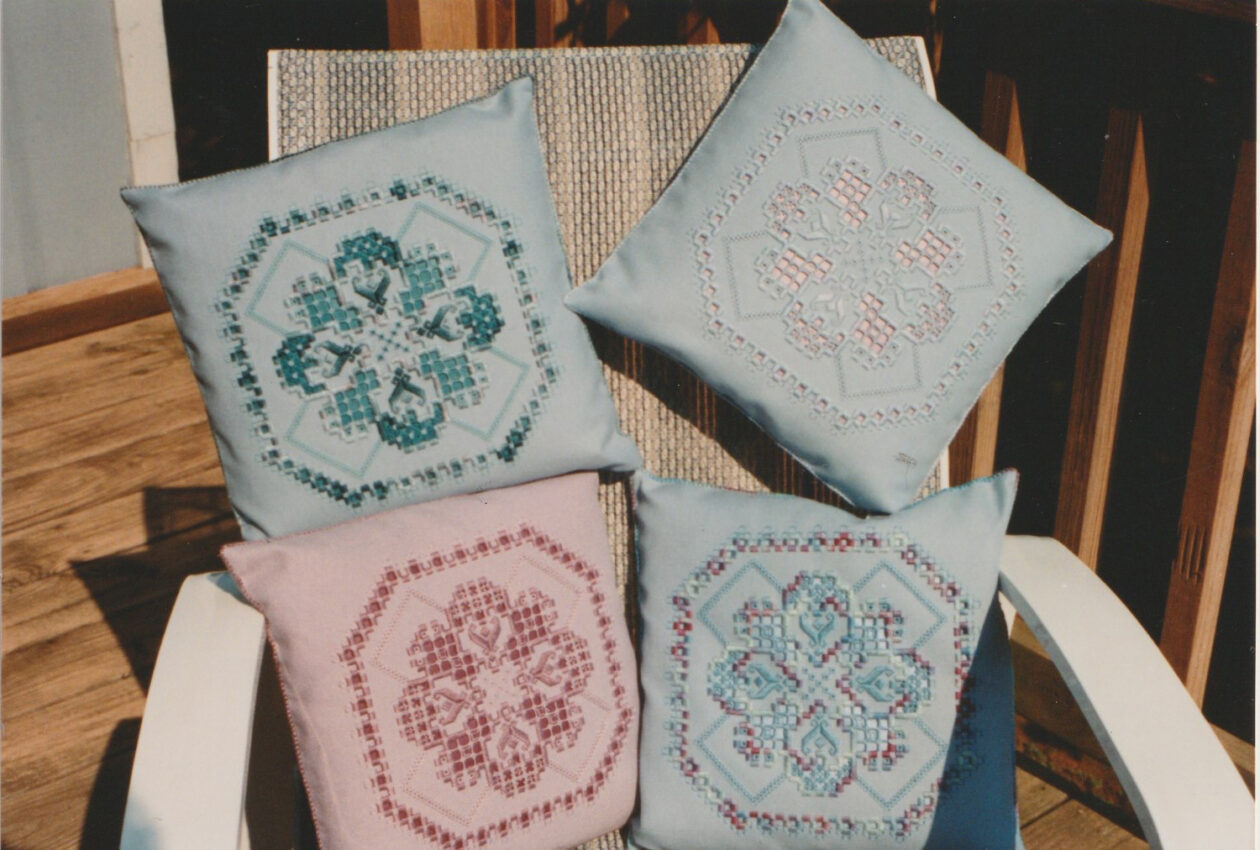
What are your favorite, must-have tools for Hardanger? Blackwork?
Obviously, good lighting is important for any stitching. At the Royal School of Needlework, we were forced to take a 10 minute break every hour—good for the bottom and the back! Also the eyes. There’s something to be said for having the TV on when you stitch, as you’ll glance up at it occasionally.
We only worked by daylight, sitting in front of large windows so there was no shadow. One day each term, the school was open to the general public to wander through and watch us at work. I remember, on one occasion, a lady stood in front of me and asked, “Why aren’t you working?” I couldn’t be rude and tell her, “You’re standing in my light.” So instead I replied, “I thought you might like to ask me some questions.” How often does someone ask you, “Doesn’t that hurt your eyes?”

As far as equipment is concerned, it goes without saying that one needs a good supply of needles, sharp-pointed scissors, and BURLING IRONS, the best tweezers originally used in weaving factories by a person minding the looms. He was able to catch the little bit of lint in the air before it became caught in the weaving, known as a burl (imperfection). It can make a flawed piece of fabric better—great for splinters (get one for your husband!).
I was able to obtain trestles from Lucy Barter, made by her husband. These do take up a little room but make working on a frame so much easier when supporting it at a comfortable height and angle.
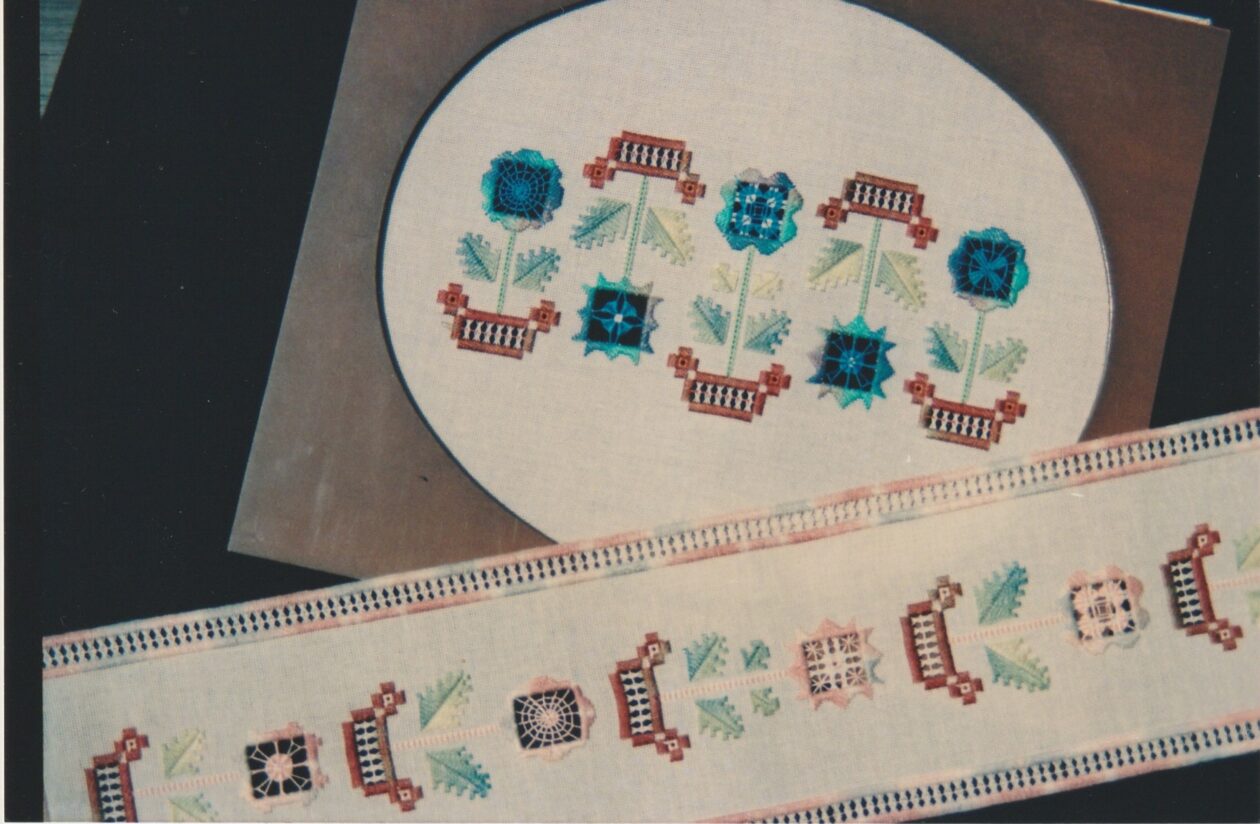
Do you have any advice for needleworkers approaching Blackwork for the first time?
Make sure it’s an appealing design that holds your interest!

What embroidery or color trends (if any) are you drawn to right now?
One day, when I’m free from doing Correspondence Courses, answering questions by email, and critiquing finished courses, I’d like to do one more Fairy Tale… Little Red Riding Hood. About a quarter of it would be the back of her hood, on the lower left corner, in a shaded or darned pattern. I could do the wolf in gray long and short stitches in Appleton’s crewel wool, with shiny white teeth. But the REAL fun part would be the quilt on the bed, maybe even a crazy quilt? Got the picture? At 88, I may NEVER achieve this, but I’d be delighted if a student would “run” with my idea.
We all get more ideas than time in which to do them!
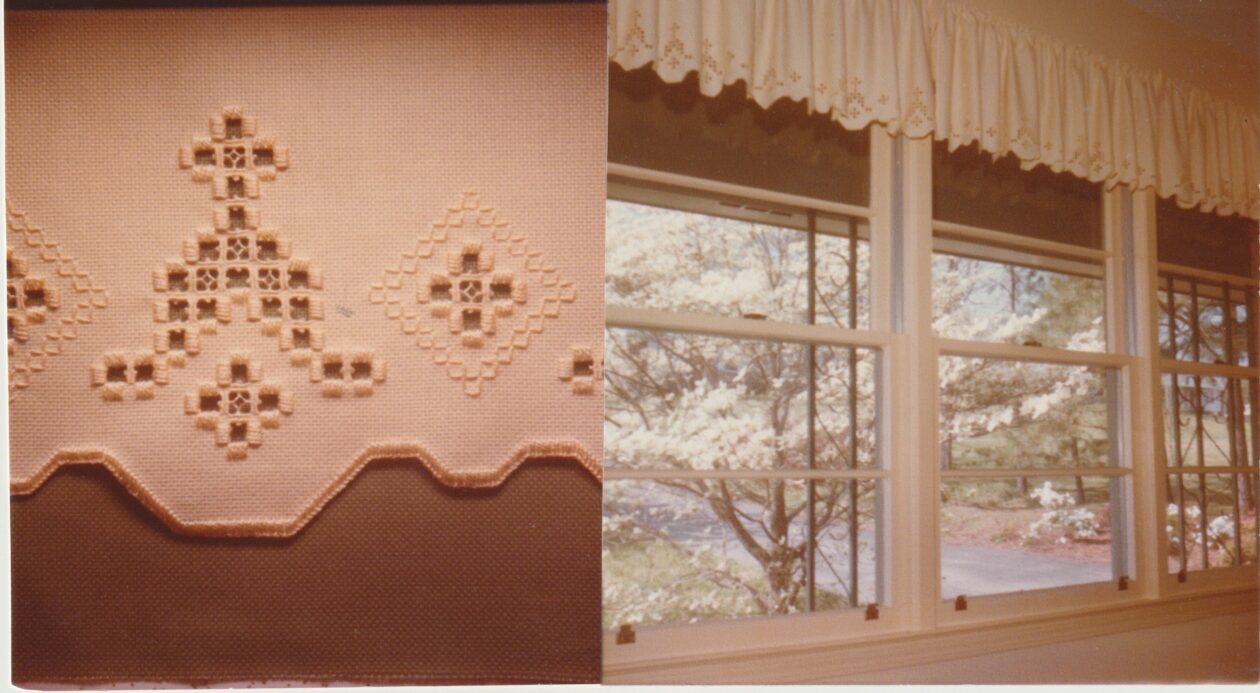
What do you hope embroiderers take from your courses?
I love teaching and seeing the satisfaction gleaned from learning a new technique or completing a piece in a familiar technique. I’m happy to answer questions by email: marionscoular@gmail.com or on my landline: 770-497-0648.
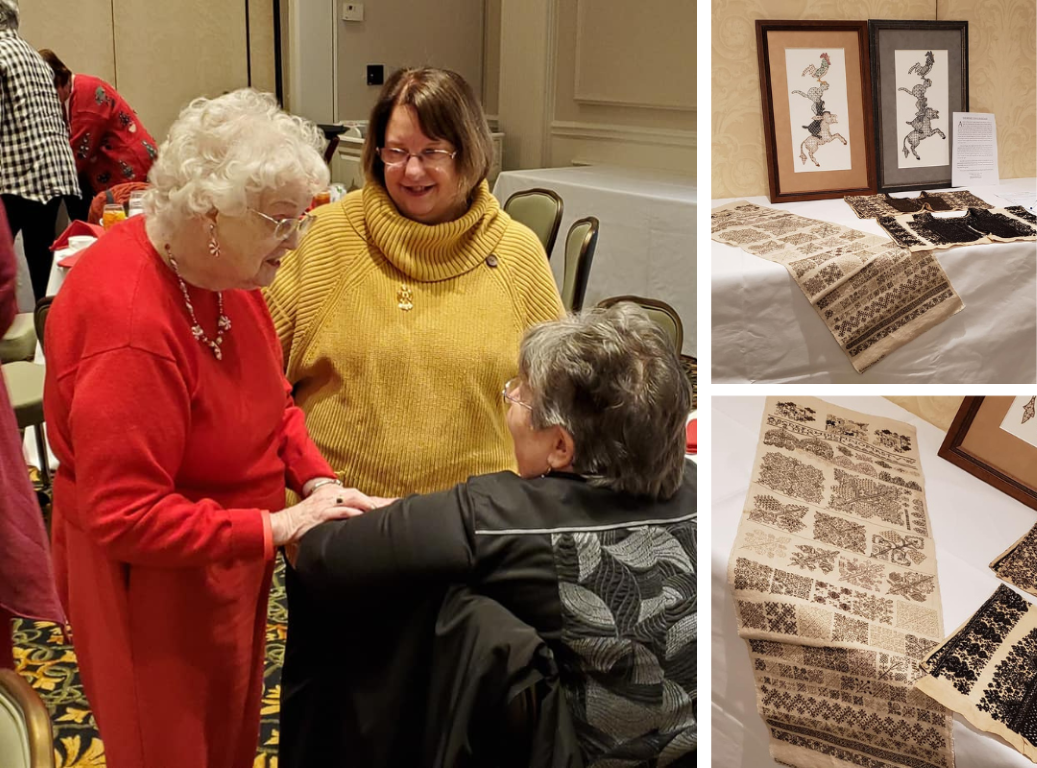
While I am a traditionalist, taking one of my courses provides “somewhere to start” and become proficient in a technique before seeing its possibilities.
Thank you to Marion for providing this illuminating peek inside her process! Register for the GCC Princess and the Pea here and browse her other ongoing courses with EGA here.
Like this? Pin it!
